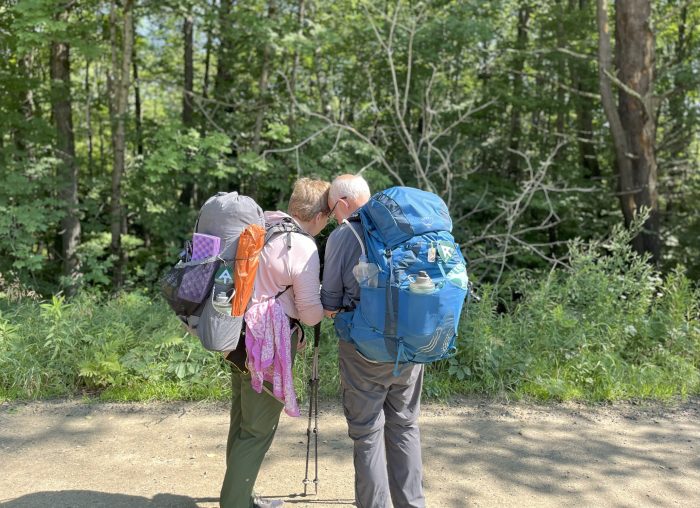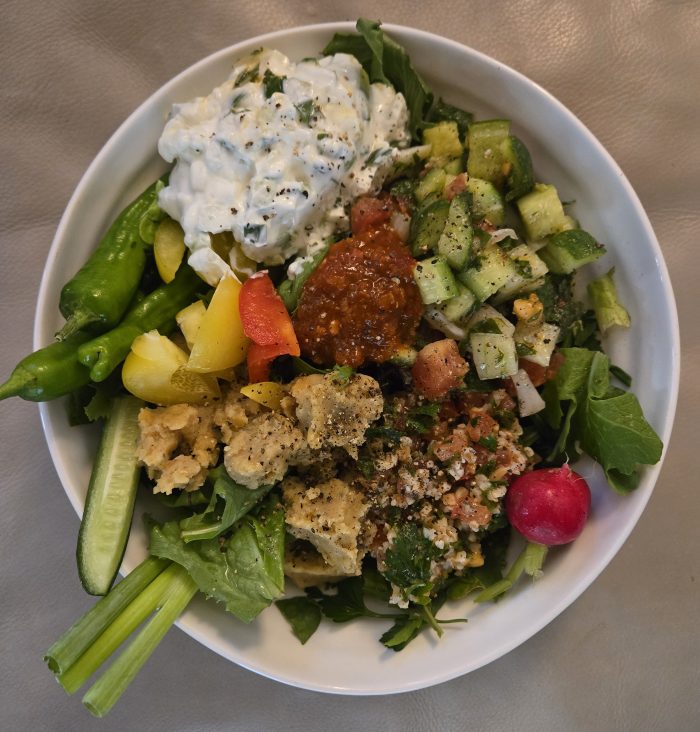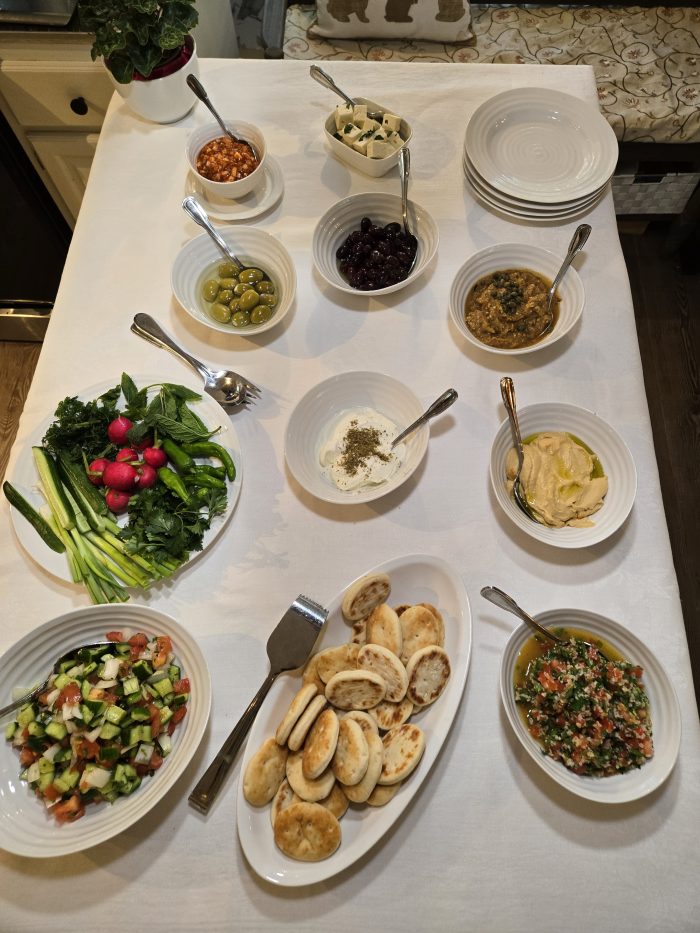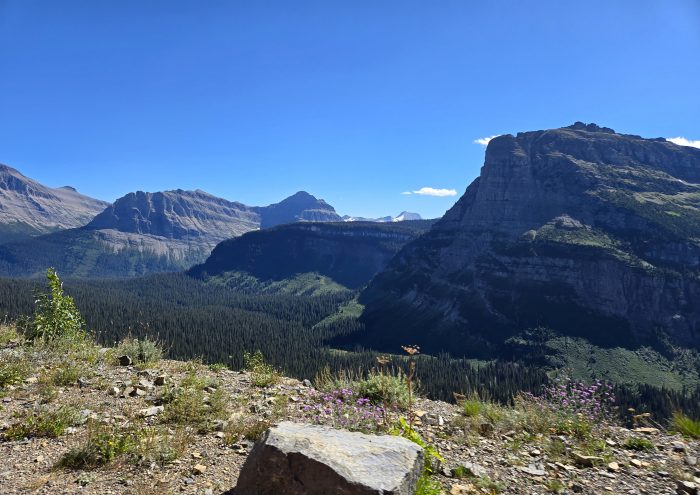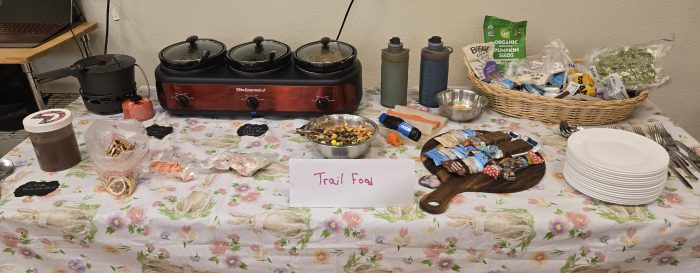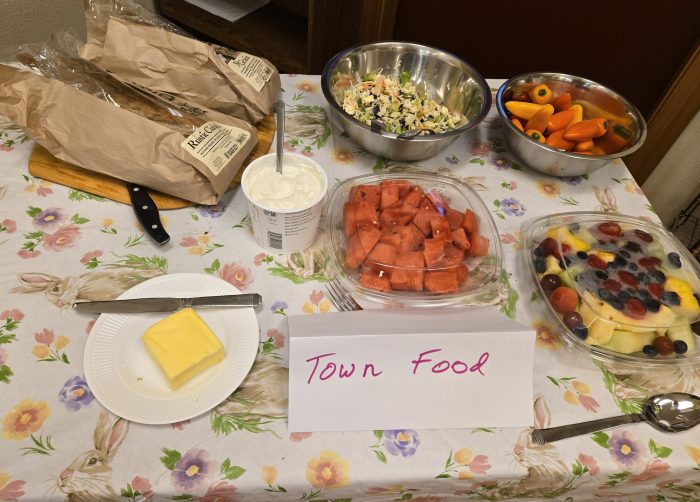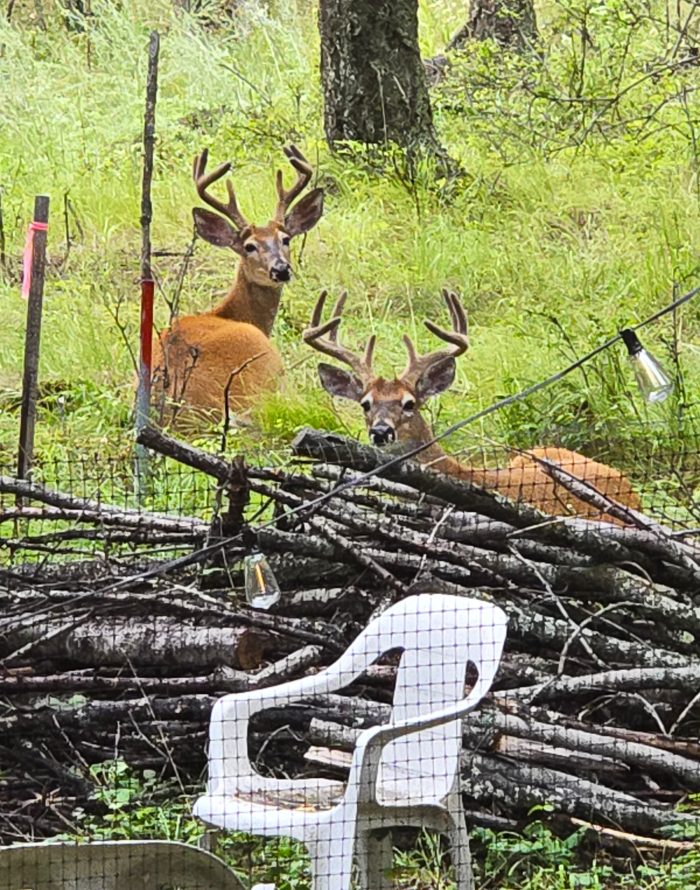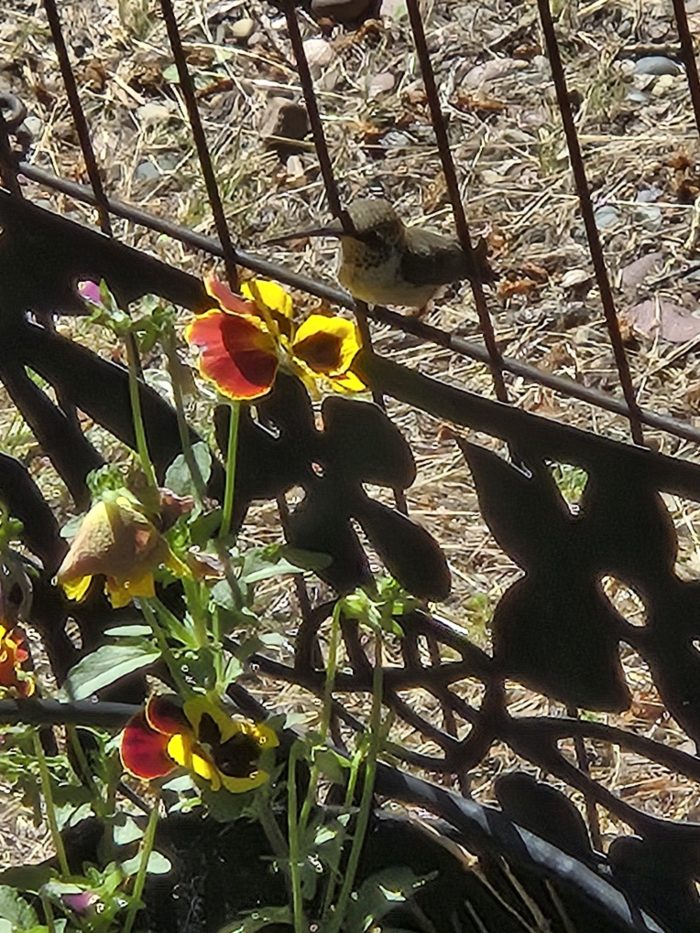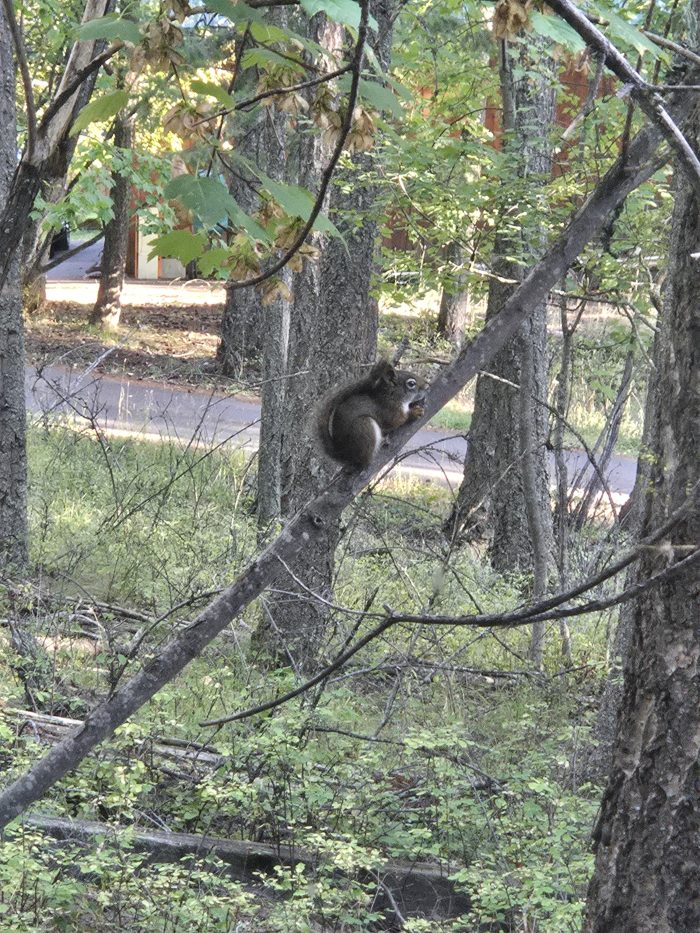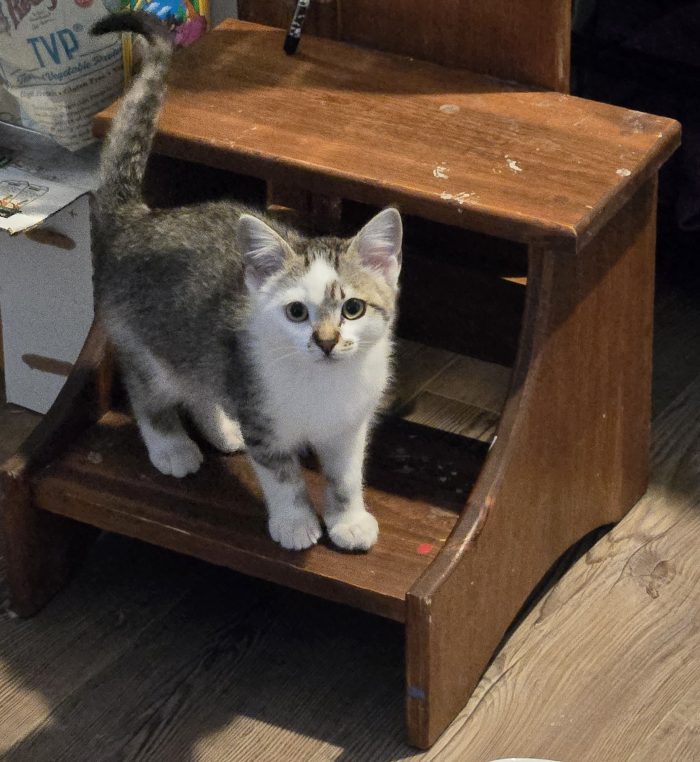It is a month since we returned home from the Appalachian Trail. In truth, it has been a pretty chaotic month but we both feel pretty settled with it. Early in the month, both of us temporarily lost the memory the hike as a recent event. Strangely, when we thought about The Trail, it was like a foggy memory. Now, it seems like something in the past but not a foggy past. As a psychologist, I know this is a process called memory stabilization in which new, easily disrupted memories are transformed into more resilient ones that are not subject to interference. Memories of specific events or experiences, episodic memory, blends with semantic (fact) memory and is encoded by the brain’s hippocampus and the neocortex. The next step is memory consolidation in which new neuronal pathways are formed. These pathways assure the information is stored, and can be retrieved, from long-term memory.
As our memories consolidate, we are contented with being home, and with the hike. Packrat, the owner of Hikers Welcome Hostel in Glenncliff, NH, sent us this week a photo he took of us. When we look at it, it sums up our years together, the hike, and the goodness we have post-hike.
Consolidating Our Experiences
It is human to forget our adventures over time. But because a psychologically rich life is the accumulation of rich experiences, it is important to journal, photograph and share them with others to maintain your memories. . . “As long as you are curating and storing your experiences in your psychological memorabilia, then you are enriching yourself every day”
Shigehiro Oishi, a psychologist at the University of Chicago, quoted from an article by Richard Sima, Washington Post
Sleep
Some memory consolidation is taking place continuously, because, like a computer, we cannot retain but so much information in our short term memory. Big events need more time to “settle in” to our collected memories than routine ones. This is partly because we forget ordinary stuff, it was ordinary, so we don’t spend much biological effort to catalogue it. We can easily link it to our existing cognitive frameworks (schemas). Things that don’t fit well tend to require more effort to consolidate. Sleep is a key element of successful memory consolidation.
We knew we would need to sleep a lot. Both science and experience has taught us sleep is a magic elixir for pain and grumpiness. It works for people of all ages but somehow, we forget and think it just applies to cranky toddlers.
Perhaps our crowning achievement as a couple has been to learn that stress makes us cranky and it is not personal. Of course, we don’t always adhere to that tenet, but we try. We have spent a lot of effort learning to say, “I feel cranky because of the stress of X,Y,Z”. It does not fix the stress or the crankiness, but it does call time out for a moment. It works a lot better than snapping each others heads off and then apologizing. We have plenty of experience with both methods and can strongly recommend identifying the crankiness and, well, taking a nap.
For the first couple of weeks it seemed like we were just eating and sleeping every moment that was not claimed by a deferred maintenance task. The Historian was sleeping more like a cat than a human, 13 to 15 hours a day. Just about the time I was getting frantic that he might not be OK, he woke up feeling normal and was much easier to be around than when his “I need a nap” period started. Between sleep and a little chiropractic care, The Historian’s back and my hip and shoulder pains are healed.
Curiously, our sleep quality was lower than on the trail for a few weeks home. A review of our fitness watch sleep data demonstrates the process. For the first week after the hike, we blew off our poorer than normal sleep attributing it to all the movement from place to place and shifting from sleeping pads back to a bed. That was followed by a couple of weeks of higher than normal sleeping heart rates and lower than normal heart rate variability. We are finally returning to our pre-hike baseline and feel much more “normal.”
We have discussed what might be the cause, but came to no conclusion. We considered that it was stress of too much deferred maintenance, or easy access to too much food too close to bedtime, or even not observing hiker midnight since we had electric lights. We also thought it might be related to exercise.
Exercise
Peaking, and Overtraining
One of the things we figured out in our memory consolidation was that our athletic ability peaked at different times on the journey. Timing your peak for an athletic event is some science and some guessing and some luck, as any competitive athlete can tell you.
I was peaking as we approached Katahdin. A couple of weeks before we got there, I suddenly was filled with energy and the knowledge I could hike on for weeks more. Earlier in the trip, I had moments of serious doubt that I could ever feel good distance hiking. I never doubted I would have the resolve to go to the end, but I also wondered if it would always hurt and be a drudge to hike. This is not the same as getting “trail legs.” We reached a point at about 6 weeks when we could grind out more miles in fewer hours, what we considered trail legs. What happened at about 2 1/2 months was more like, “Oh, yes! I remember how to be a distance hiker.” I realized I could have hiked on for months before I fell apart. Even my fitness watch considered 10 mile days with a pack as “not exercise,” advising me to increase my exercise load if I wanted to improve my fitness.
The Historian peaked much earlier than I and then reached a state of overtraining at the end of Virginia. We were similarly challenged, mentally and physically, with the hike for the first few weeks. Then, he moved ahead in his hiking competence. It was his physical energy and emotional resolve that kept me walking through the physical and psychological injuries I sustained from all the wet. He picked me up off the trail many times, literally and figuratively. Toward the end, he simply had no “go” left.
In retrospect, he commented, “When I reached the end of Virginia, I was done.” He did hike some after that, but it was difficult and his body exhibited the classic signs of overtraining including unusual muscle soreness, performance decline, prolonged general fatigue, inability to relax, poor sleep, appetite loss, gut problems, lack of energy, motivation, and flat affect.
Exercise Routine
I gave us a few days of lolling about and then started prodding us to get back to exercising. We are blessed with a lovely set of hiking and Nordic ski trails near our house. Even when we are very busy, we can get in a good jaunt within about an hour. Typically, after breakfast we take off for a 1 1/2 to 2 mile sojourn that gets our heart rates up. The trail we most commonly do is 1.5 miles. It roughly breaks down into three 1/2 mile sections, one flat, one 250 feet down, and one 250 feet up. Our typical time is 32-35 minutes with our shortest being 28. The typical exercise load on our fitness watches, depending on the temperature (colder is higher load), is 45 to 100.
When we started back, we walked through the track in 32 minutes and got NO exercise credit for it. A swift pace on this trail did not raise our heart rate enough to count. An adjustment was required. Now, we are pressing as hard as we can to keep the pace over 3 miles per hour, including the uphills. Some younger hikers saw us coming up the steep section at 2.8 miles per hour and commented that we “had quite a head of steam worked up.” At an average of 3 1/2 miles per hour, we are getting exercise credit from our watches, but I also have a sneaking suspicion that it is not just our increased effort, but that we are slowly losing our trail fitness. It is sad to see it go, but not unexpected. We had hoped to squeeze in a backpacking trip to the Bob Marshall Wilderness before we lost our trail legs, but maybe not. We can live with that.
Nutrition
Most hikers tell stories about the moment they realized they had to change their eating habits–both for the trail, and after returning to real life. Neither of us realized that hiker hunger would last past the hiking part. I thought it would be more like having gotten used to eating more than we need in town than literally feeling ravenous. It took us a couple of weeks to stop feeling like we were starving all the time.
Looking back, it is shocking that we felt so genuinely hungry given how much we were eating the first couple of weeks. Now, I am not preparing salad for 100 every meal. We were, before the hike, and continue, after the hike, to be big eaters. We eat mountains of vegetables each day to which we add grains and plant protein along with an occasional animal protein. We make a gallon of yogurt each week and since coming back, we have run through the gallon in less than a week.
The Historian struggled with keeping weight on during the hike. We never saw how much he weighed at his lowest, but suspect he crossed below 150 pounds, which was too little for him. We do know his body fat got below 20% and stayed in the low 20% range for most of the hike. Toward the latter part of the trip, his weight stabilized at 160 and he would like to stay in that range. So far, so good. He is eating a healthy diet and a goodly amount of food but not losing or gaining weight.
I continue with my thrifty metabolism. If famine were to strike, I would be well prepared. While on the trail, I reduced my calories to 1800-2200 per day in order to shift food to The Historian. I did not lose weight. I will write more about that later in a blog on our food, but for now, suffice it to say that it does not take much to keep my motor running. I did lose weight while on the trail, but mostly I compacted what I had. I continue to record everything I eat, and have shifted my caloric intake downwards to 1500-1800 calories per day and am maintaining my post-trail weight.
For those of you who audit our grocery purchases (ha ha), I can say I am proud that we finally got all the quasi-mess we left from dehydrating trail food preparing our resupply boxes cleaned up. The refrigerator is well organized and ready for action to feed us with wet food. We make our own yogurt from milk we get from the dairy down the road and we rehydrate and cook our own beans. The garden would usually be bursting at this time of year but since we were gone during the planting season, we are purchasing more than usual. We still have a lifetime supply of onions from the garden. Kale and radishes are coming along. We hope the peas will come in before the winter hits.
I have to say it feels strange to reach in the fridge and pull out beans and grains without having to remember to cold soak them hours before. It is a bit of trouble to make yogurt more than once a week but it seems to just disappear. The sour cream in the top right is for one of our resident animals (see below).
Relationships
Catching Up With Family
One of the big stressors for us, and probably for anyone with family, has been reuniting with the daily activity of our families. Everyone lovingly withheld requests for our time while we were hiking. However, there has been a lot of deferred maintenance this month. I have not handled this as well as I would have liked. It felt like an oncoming train. Thankfully, after we got through a stack of doctors appointments and cleaned the house, it is feeling less stressful.
The elder we provide care for did very well while we were gone. As we had hoped, she gained confidence in what she could do for herself since we were not there to do some of the routine chores we do for her. She, and we, are very proud of her efforts. Unfortunately, the week after we returned, she became ill and spent a week in the hospital. After she was home and assessing the effect of our trip on her, she declared that “it was a long trip” and was hard on her.
Other family had been waiting for us to return so they could visit. We were able to see my sister on our return home. Another family member came to visit last week and we are scheduled to travel to visit yet more family in a couple of weeks. We had a great meal with family and the mailed Love Gap Cookie friends. I even took a video and texted it to our fellow hiker-foodie Daddy Longlegs who is a SOBO about half-way through.
It is good to have family, but also requires us to think more broadly than when we were on the trail. Our metaphor for this an insider joke about what to have for dinner. While on the trail, the answer usually was “the heaviest one.” With so much visiting, we have had to think beyond the grams that just the two of us are carrying.
During one family visit, we were magically able to get a pass to drive the Going to the Sun Road, which everyone enjoyed, setting aside a little acrophobia–a normal response to the narrow road with few guardrails. Looking into the valley from Logan Pass and realizing that we hiked the equivalent of top to bottom and back up top on an average day was quite shocking.
Catching up with Friends: Our Coming Out Party
As regular readers know, in addition to our family, we had a group of friends who supported us on the hike. We had a celebratory meal with this circle of friends, they resolve ones who launched us with the blessing of our rings and hiking trip. It was our treat, and we brought a sample of trail food and a sample of town food. We also got a great big cake.
People generally were surprised at the palatability of the trail food. They were not impressed with our chia, flaxseed, and protein powder breakfast although they allowed as how it was functional. The town food was popular but mostly everyone ate cake.
The Animals in Our Lives
While we were gone, the animals continued their occupation of our yard. The local bear ate all the apples off the right side of our tree. The deer babies from last year have grown up!
I don’t know if the humingbirds changed or if we did, but we have been able to watch them up close in the garden. Perhaps they were always here but our eyes are seeing natural movements differently after being on the trail. I managed to get video of a humming bird sitting on the fence for over a minute.
Our resident squirrel is also more casual around us. I caught it napping in a tree the other day.
After a few days home, I was working in the garden and was hailed by a very loud kitten that was living under our deck. We have no idea what happened to the mother or other kittens.
This kitten was clearly in distress, nearly starved to death and muddy. We could not come close to approaching it, but thought perhaps if we got it inside and fed it, we could take it to the vets and find a home for it. We left it a trail of food into our house and it came in. It loves sour cream.
The cat has now been living behind the washing machine in our kitchen for a month and we still cannot touch it. It talks to us and rolls around on the floor purring at us but runs when we try to approach. We captured it once by subterfuge and terrified it. Eventually, it did settle down and purred and accept pets but we decided to leave it untouched. For now, we have a wild animal living in our house with us.
And, before you say we should keep it, no. We should not keep it. We keep eying it, ready to pounce, when it goes after our furniture. We have done cats, but we are not cat people and this cat needs someone who will love it unreservedly.
In the mean time, we cannot tell if it is male or female (we suspect male). It needs a name. If anyone has a suggestion, we are all ears!
